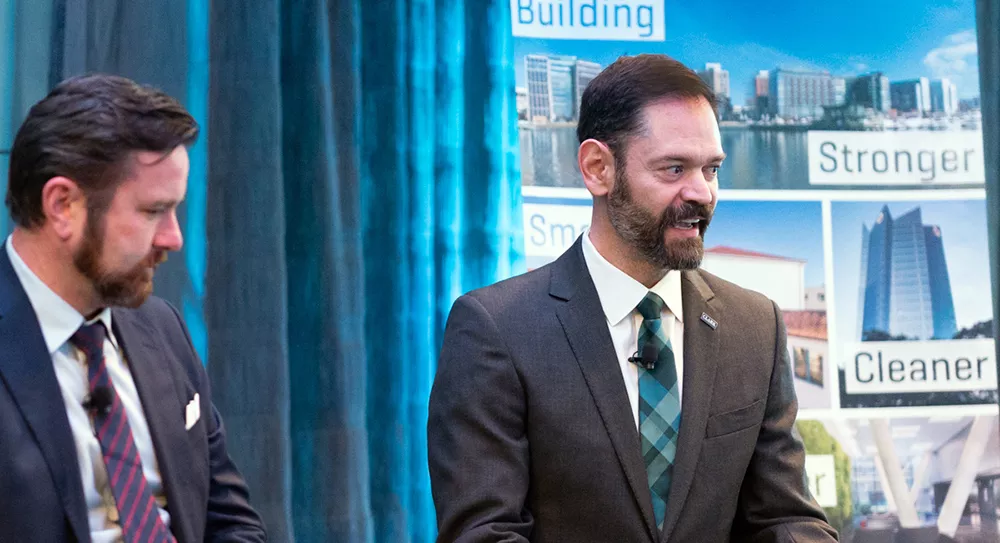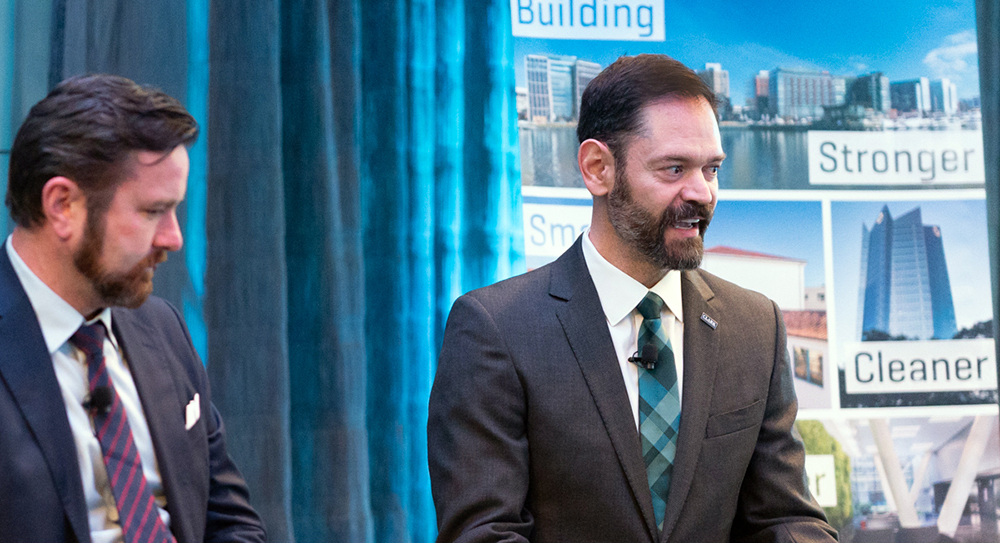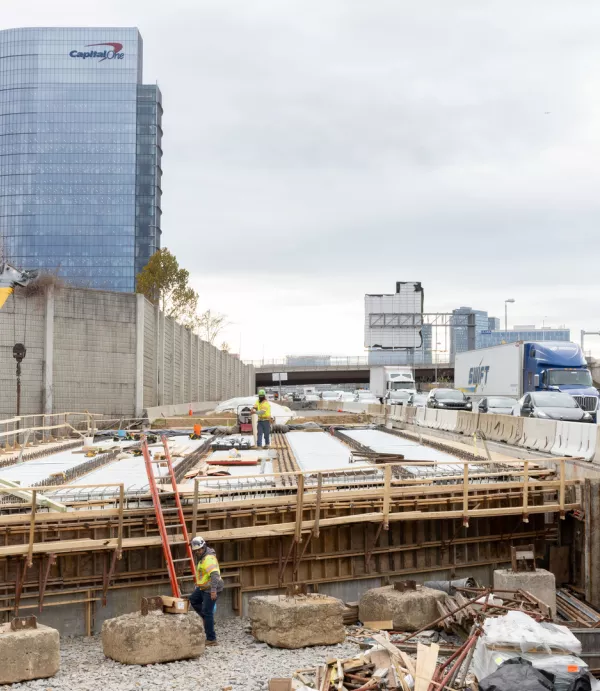4 Key Takeaways from Clark's Industry Event on Emerging Solutions to Building Decarbonization
November 19, 2022

On the eve of Greenbuild 2022 in San Francisco, Clark Construction hosted a diverse cross-sector networking event for more than 40 industry professionals. The event featured a moderated panel discussion with experts representing leading companies in the sustainable construction and logistics industry to explore “Emerging Solutions to Building Decarbonization.”
Moderated by Fernando Arias, director of sustainability at Clark, the panel featured:
Don Davies, president, Magnusson Klemencic Associates
Stacy Smedley, executive director, Building Transparency/EC3
James Swanston, founder and CEO, Voyage Control
The discussion explored various building decarbonization topics, including value drivers and emerging procurement impacts in the embodied carbon space. Below are four key takeaways from the panelists’ collective perspectives about embodied carbon and solutions in the marketplace today:
1. Clients are driven to new requirements from government regulations, climate pledges, and financing institutions
As many climate action pledges have started to gain momentum with new tools from non-profit organizations, like Building Transparency and Science Based Targets initiative (SBTi), clients are facing additional requirements from emerging regulations to accelerate the decarbonization of their buildings portfolios.
Led by the Securities Exchange Commission's Draft Climate Change Ruling that requires greenhouse gas (GHG) emissions disclosure and other material climate risks to businesses from public companies, these new requirements are driving capital towards carbon accounting during all phases of a building’s lifecycle. As a result, net zero emissions targets are even broader than before.
“The biggest investment banks,” James Swanston says, “the biggest financiers for buildings going forward for the next 50 years are going to be the likes of Macquarie Group, Brookfield, Ontario Teachers, Goldman Sachs -- who all have net-zero targets. That money is going to force things through way faster than any government will."
2. The value proposition for low-carbon materials is still evolving
Beyond climate action pledges and requirements, many real estate clients are still working on analyzing the financial value of low-embodied carbon buildings. Cost will always be a major driver impacting a client’s decision to focus efforts on decarbonization.
"When carbon as an input and output in building materials can be presented to clients as the performance-enhancing ingredient that changes and improves the actual product,” Fernando Arias says, “now we’re talking in the kind of currency that owners are interested in. They want the best value for everything. But, right now, we don’t have enough people in our industry who communicate the value proposition of a decarbonized or low-carbon material or a project."
Image

3. Business-as-Usual (BAU) material procurement can lead to centuries of additional carbon emissions for building projects
Global pandemic impacts and labor shortages have disrupted Business-as-Usual procurement decisions over the past couple of years, often increasing carbon loads on otherwise more sustainable building material solutions.
“I'm a structural engineer proportioning, sizing, and designing a very limited set of materials with a really, really big volume of those materials -- concrete, steel, timber, and variations of those in some forms,” says Don Davies. “ The volume of those materials that go into a project on a square footage basis can add hundreds of years of embodied carbon to the building if there are no optimizations. So now that industry groups for these materials are consolidating their guidance and solutions to align on policies like Buy Clean and others, it’s a game changer at these scales.”
Image

4. Data and standards alignment is essential to advance the carbon emissions reduction momentum
Adding more varieties of standards in carbon monitoring delays the momentum to reduce carbon emissions while also making data collection and processing less insightful across industries. Yet, with each emerging trend in sustainable building design and construction, a crop of experts emerges with diverse perspectives and solutions driven by data engineering.
"I've seen this across all of the different sustainability issues we've looked at in the past ten years, like the toxicity of products, where once we target the problem, everyone thinks they have to come up with their own solution to address it. We don’t have the time or capacity to do that with embodied carbon," says Stacy Smedley.
Data integrity is a significant challenge, with portfolio projects in multiple countries and with multiple different data standards. But, Smedley adds, “I’m so excited about the scaling going on in the US right now. We’re enabling policies because the public sector has access to data that is verified in a standard format, so now there are Buy Clean policies at the city, state, and federal levels driving greater alignment on standards.”
Looking to the future, solutions to building decarbonization will continue to rally toward simplified standards and uniform data measures for carbon accounting associated with building materials and construction operations.


